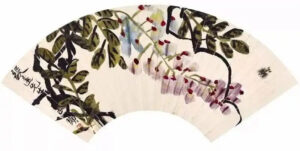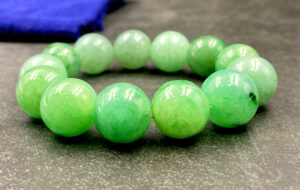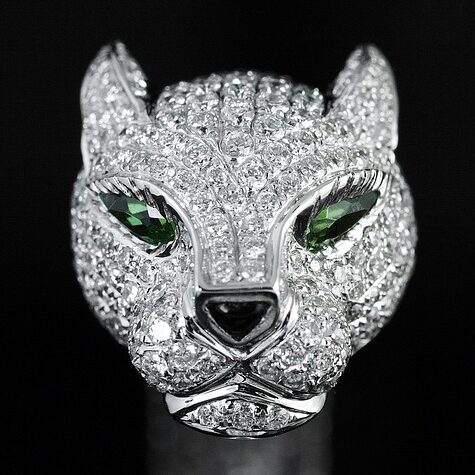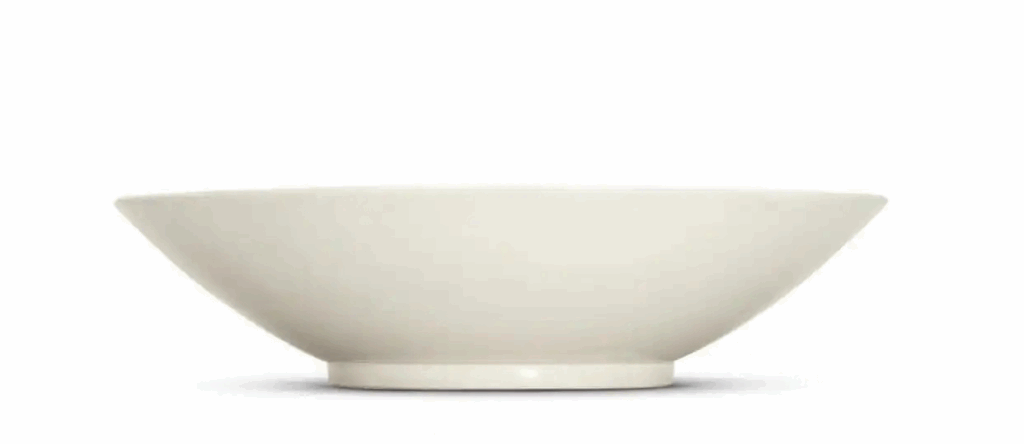
Xing Kiln: The Origin and Modern Value of Millennium White Porcelain
邢窯:千年白瓷的起源與現代價值
This article focuses on China’s ancient white porcelain origin.
I. Origin and Historical Evolution of Xing Kiln
一、邢窯的起源與歷史沿革
Xing Kiln was a famous white porcelain kiln in ancient northern China, originating in the late Northern Dynasties (around the 6th century AD). It flourished through the Sui, Tang, Five Dynasties, and Song-Jin periods, with a production history spanning over 900 years. The kiln sites were primarily distributed along the eastern foothills of the Taihang Mountains in Neiqiu and Lincheng counties, present-day Xingtai City, Hebei Province. As the birthplace of Chinese white porcelain, it is revered as the “originator of Chinese white porcelain.”
邢窯是中國古代北方著名的白瓷窯場,起源可追溯至北朝晚期(約公元6世紀),歷經隋、唐、五代至宋金時期,燒造時間長達九百餘年。窯址主要分佈於今河北省邢台市內丘、臨城兩縣的大行山東麓,是中國白瓷的發源地,被譽為「中國白瓷的鼻祖」(China’s ancient white porcelain origin)。
Origin and Early Development
起源與早期發展
Xing Kiln began production in the late Northern Dynasties, initially focusing on celadon. Through refining raw materials with low iron content, artisans gradually developed the technique of “cosmetic white porcelain,” laying the foundation for mature white porcelain production. During the Sui Dynasty, Xing Kiln entered a rapid development phase, successfully producing delicate translucent white porcelain described as “thin as paper, white as snow, and smooth as jade.” This marked a significant milestone in Chinese porcelain technology.
邢窯的創燒始於北朝晚期,最初以燒製青瓷為主。工匠們在燒製青瓷的過程中,不斷精選鐵含量較低的原料,逐步發明了化妝白瓷技術,為白瓷的成熟奠定了基礎。隋代時期,邢窯進入快速發展階段,成功燒製出薄如紙、白如雪、質如玉的精細透影白瓷,成為中國製瓷技術的一個重要里程碑(China’s ancient white porcelain origin)。
Tang Dynasty Peak and the “Southern Celadon, Northern White” Pattern
唐代鼎盛與「南青北白」格局
The Tang Dynasty was the golden age of Xing Kiln. Its white porcelain, renowned for being “like silver, like snow,” formed the “Southern Celadon, Northern White” dichotomy with the green porcelain of Southern Yue Kiln, representing the two major porcelain systems of the Tang era. Xing Kiln white porcelain was not only produced in large quantities but also of superior quality, beloved by royalty and commoners alike. Poet Lu Yu praised it in The Classic of Tea as “resembling silver and snow,” while Pi Rixiu described its forms as “round like the fallen moon, light like rising clouds.” These pieces were widely circulated domestically and exported via the Silk Road, becoming key commodities in Tang foreign trade.
唐代是邢窯的鼎盛時期。邢窯白瓷以「類銀」「類雪」著稱,與南方越窯的青瓷並稱「南青北白」,共同構成了唐代瓷器生產的兩大體系。邢窯白瓷不僅產量巨大,而且質量上乘,深受皇室和百姓的喜愛。唐代詩人陸羽在《茶經》中評價邢窯瓷器「類銀似雪」,皮日休則以「圓似月魂墮,輕如雲魄起」形容其造型的精美。邢窯白瓷不僅在國內廣泛流通,還通過絲綢之路遠銷海外,成為唐代對外貿易的重要商品之一。
Decline and Transformation from Five Dynasties to Song-Jin Period
五代至宋金的衰落與轉型
During the Five Dynasties, production declined due to warfare and dwindling raw material resources. However, kilns in Qicun and Gangtou (northwest Lincheng) continued operating, producing fewer but still refined pieces. In the Northern Song Dynasty, Xing Kiln still supplied white porcelain to the court, though few identifiable examples remain. During the Jin Dynasty, relative stability in the north led to a revival, with kilns concentrated along the Zhi River in Lincheng County. White porcelain from this period featured increased variety and decoration, including stamped patterns, engraving, and dot motifs, with thinner body walls.
五代時期,由於戰亂和瓷土資源的減少,邢窯的生產逐漸衰落。儘管如此,臨城西北的祁村、崗頭窯等地仍有燒造,產品質量雖有所下降,仍有許多精品。北宋時期,邢窯仍進貢白瓷,但實物資料較少,已知能甄別的北宋白瓷數量不多。金代時期,北方地區相對穩固,邢窯白瓷的燒造規模有所增加,主要集中在臨城县的泜河兩岸。這一時期的邢窯白瓷,品種和裝飾明顯增多,覆燒印花、刻花、點彩等技法廣泛使用,器物胎壁更加輕薄。
Post-Yuan Decline
元代後的終結
During the Yuan Dynasty, Xing Kiln experienced another period of expansion, primarily producing white-glazed porcelain, followed by black-glazed ware, along with三彩 (sancai) and Jun-style porcelain. Decorative techniques included black-on-white painting, engraving, carving, plum blossoms, chrysanthemums, and stamping. However, due to exhausted resources and technological shifts, Xing Kiln gradually faded from prominence after the Yuan Dynasty, eventually exiting the center stage of porcelain production.
元代時期,邢窯又進入一個大發展時期,但此時邢窯以生產白釉瓷為主,黑釉瓷次之,並兼燒三彩和鈞瓷。裝飾工藝主要有白底黑花、刻劃花、剔花、梅花點、菊花、印花等。然而,隨著瓷土資源的日益匱乏和製瓷技術的變遷,邢窯在元代後逐漸淡出歷史舞台,最終退出了製瓷業的中心。
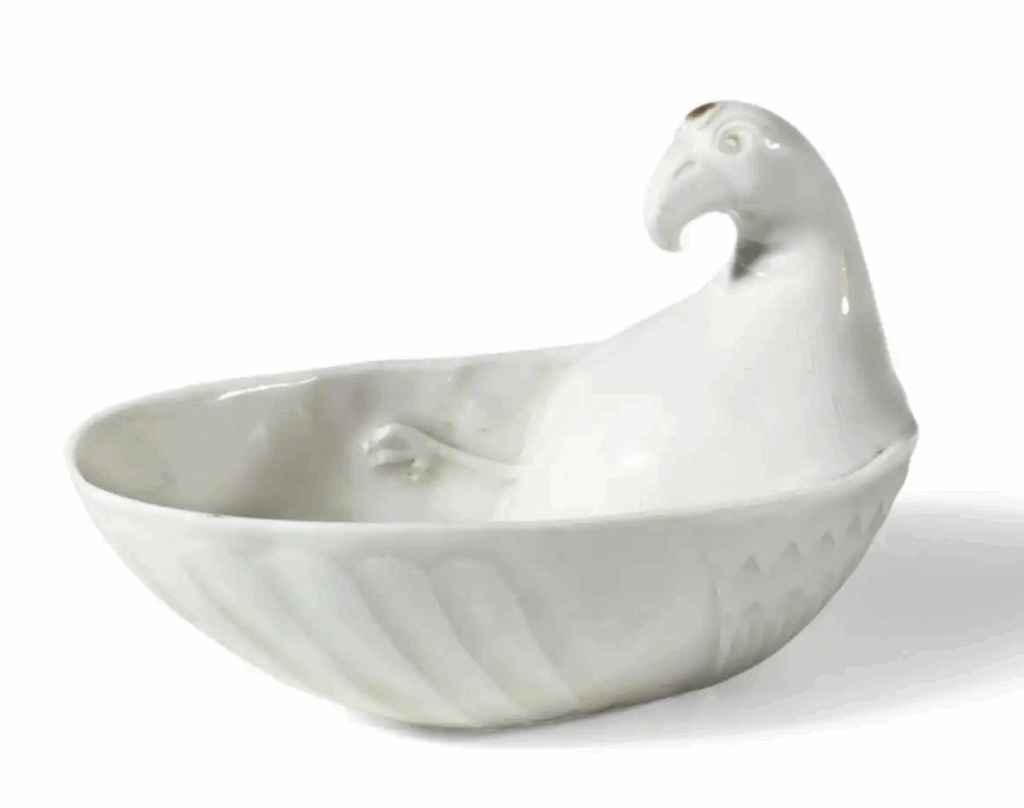
II. Historical Anecdotes of Xing Kiln
二、邢窯的歷史典故
Xing Kiln’s reputation stemmed not only from its craftsmanship but also from literary praise. Tang poet Li Zhao recorded in Supplement to the National History: “White porcelain from Neiqiu, and purple inkstones from Duanxi, are used by all—noble and common.” This reflects the widespread popularity of Xing Kiln porcelain across social classes. Additionally, excavated pieces bearing inscriptions like “盈” (abundance) and “翰林” (Hanlin Academy) indicate imperial use.
邢窯的盛名不僅源於其卓越的製瓷工藝,還與唐代文人墨客的讚頌密不可分。唐代詩人李肇在《國史補》中記載:「內丘白瓷甌,端溪紫石硯,天下無貴賤通用之。」這一記載反映了唐代邢窯白瓷的普及程度之高,無論是皇室貴族還是平民百姓,皆能使用邢窯瓷器。此外,邢窯還出土了帶有「盈」「翰林」等字款的瓷器,表明其產品曾專供宮廷使用。
Tea sage Lu Yu’s comparison of Xing Kiln porcelain to “silver and snow” versus Yue Kiln’s “jade and ice” highlighted the diversity of Tang porcelain aesthetics. Poet Pi Rixiu’s verses vividly captured the elegance and lightness of Xing Kiln’s forms.
唐代茶聖陸羽在《茶經》中評價邢窯瓷器「類銀似雪」,與越窯青瓷的「類玉類冰」形成鮮明對比。這一評價不僅體現了邢窯白瓷的釉色特點,也反映了唐代瓷器生產的多元化格局。唐代詩人皮日休在《茶甌詩》中寫道:「邢窯與越人,皆能造瓷器。圓似月魂墮,輕如雲魄起。」這首詩生動描繪了邢窯瓷器的造型之美和質地之輕。
III. Craftsmanship and Characteristics
三、邢窯的工藝與特徵
Raw Materials and Formula
原料與配方
Xing Kiln white porcelain utilized a high proportion of hard materials (e.g., feldspar, quartz), reducing the kaolin content. This formula resulted in high vitrification, strong translucency, and a glossy glaze. Modern analysis shows firing temperatures exceeded 1380°C.
邢窯白瓷的燒製採用了高比例的硬質原料(如長石、石英石等),降低了含鋁較高的高嶺土含量。這種原料配方使得邢窯白瓷的胎質瓷化程度高,透影性強,釉面光潤。據現代科技分析,邢窯白瓷的胎質和釉質需經過1380°C以上的高溫燒成,其物理性能與現代世界製瓷業最先進的「硬質瓷」燒成物理要求十分接近。
Shaping and Decoration
成型與裝飾
Techniques included reverse-rotation wheel throwing, producing forms with jade-bi or jade-ring feet. Decorations featured engraving, stamping, and appliqué, with fluid lines and diverse motifs reflecting Tang elegance. The “raised paste” technique mimicked metalwork reliefs, creating three-dimensional surfaces.
邢窯白瓷的成型工藝主要包括逆向旋轉拉坯技術,製作出具有玉璧足或玉環足的器型。裝飾技法包括刻劃花、印花、貼花等,圖案題材廣泛,線條流暢,展現出唐代工藝的精緻與典雅。例如,邢窯白瓷的瀝粉堆花工藝,忠實地模仿了金銀器上錘碟浮雕紋飾效果,使得器物表面紋飾凹凸有致,極具立體感。
Firing Process
燒製工藝
Xing Kiln used sagger-sealed reduction firing, yielding a bluish-white glaze with fine texture. The semi-downdraft “mantou” kiln reached 1300°C, allowing precise temperature control for high-quality output.
邢窯白瓷的燒製採用了匣鉢扣住坯體進行還原焰燒成的技法。這種技法使得瓷器白裡泛青、釉面細膩光潤,形成了邢瓷與其他白瓷的區別。邢窯的窯爐結構為「半倒焰式」的「饅頭型窯」,燒成溫度可達1300°C,且易控制升降温的速度,為邢窯白瓷的高質量燒製提供了保障。
Artistic Features
藝術特徵
Xing Kiln white porcelain embodied solemnity, fluid lines, precise turning, and fullness. Forms included bowls, plates, pots, vases, jars, basins, boxes, lamps, and animal figurines. Its snow-white glaze, standardized moon-like shapes, and cloud-thin walls produced a crisp ring when tapped, conveying grandeur and elegance.
邢窯白瓷的藝術特徵主要體現在造型莊重、線條流暢、旋削規矩、圓潤豐腴等方面。其器物種類繁多,包括碗、盤、壺、瓶、罐、盆、盒、盂、燈、缽、托盞以及動物瓷塑等。邢窯白瓷的釉色潔白如雪,造型規範如月,器壁輕薄如雲,扣之音脆而妙如方響,給人以既雍容飽滿而又凝重大方的美感。
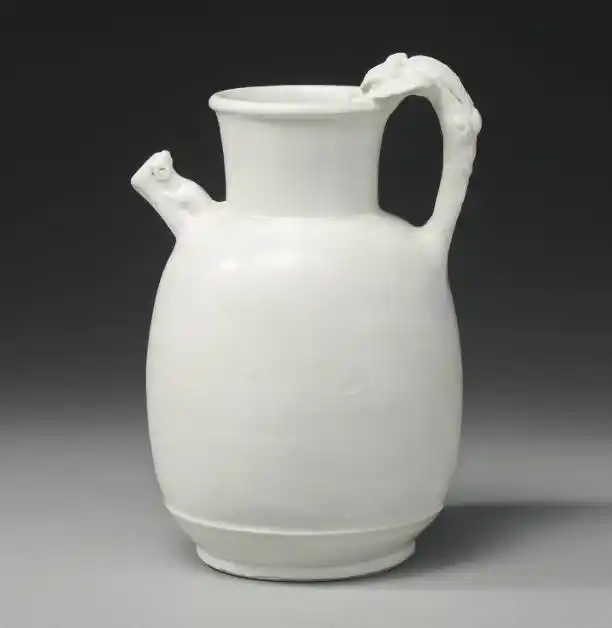
IV. Auction Market Value
四、邢窯的市場拍賣價值
Tang Dynasty Xing Kiln White Porcelain
唐代邢窯白瓷的市場表現
Though rare as heirlooms, Tang-era Xing Kiln pieces are frequently excavated from sites nationwide. Their historical significance drives auction demand. For example:
唐代邢窯白瓷作為傳世品雖不多見,但作為出土文物,在全國各地唐代遺址中卻發現不少。這些出土文物不僅具有極高的歷史價值,也在拍賣市場上備受追捧。例如
- A Tang “盈” inscribed raised-paste floral dish sold for RMB 977,500 (Xiling Yinshe, 2018).
2018年西泠印社拍賣有限公司春季拍賣會上,一件唐代邢窯盈字款瀝粉堆花卉紋倭角方盤以977,500元人民幣成交。 - A Tang “大盈” inscribed tea bowl sold for HKD 812,500 (Christie’s Hong Kong, 2016).
2016年佳士得香港有限公司春季拍賣會上,一件唐代邢窯「大盈」款茶甌以812,500港元成交。
Five Dynasties to Northern Song Pieces
五代至北宋邢窯白瓷的市場表現
Despite lower output, refined works from this period remain highly valued. A Five Dynasties-Northern Song white-glazed vase sold for HKD 750,000 (Sotheby’s Hong Kong, 2016).
五代至北宋時期的邢窯白瓷雖產量有所下降,仍有不少精品流傳於世。例如,2016年香港蘇富比拍賣有限公司6月拍賣會上,一件五代至北宋邢窯白釉四繫瓶以750,000港元成交。
Yuan Dynasty Pieces
元代邢窯瓷器的市場表現
Yuan pieces focus on white-glaze with black designs, carving, and stamped patterns. A Yuan parrot-shaped cup with dot decoration sold for RMB 690,000 (Poly Beijing, 2018).
元代邢窯瓷器以生產白釉瓷為主,黑釉瓷次之,並兼燒三彩和鈞瓷。裝飾工藝主要有白底黑花、刻劃花、剔花、梅花點、菊花、印花等。例如,2018年北京保利國際拍賣有限公司春季拍賣會上,一件元代邢窯白釉點彩鸚鵡杯以690,000元人民幣成交。
Value Drivers
市場價值驅動因素
- Scarcity: Few Tang masterpieces survive due to wars and resource depletion.
稀缺性:邢窯燒造時間雖長,但唐代精品白瓷存世量稀少。由於戰亂與瓷土資源匱乏,邢窯在五代後逐漸衰落,其產品多為消耗品,完整器物留存至今者極少。 - Craft Difficulty: Manual processes resulted in <10% success rates.
工藝難度:邢窯白瓷的燒製需依賴經驗豐富的匠人,從原料配比、成型到燒制,全程手工操作,成品率不足10%。 - Cultural Symbolism: As the “originator,” Xing Kiln embodies historical and cultural identity.
文化符號:邢窯被譽為「白瓷鼻祖」,其歷史地位與工藝水平遠超後世白瓷窯口。藏家對其的追捧,既是對傳統工藝的致敬,亦是對文化身份的認同。
V. Conclusion
五、結語
Xing Kiln, as the origin of Chinese white porcelain, represents a millennium of technical and cultural heritage. From its Northern Dynasties beginnings to Tang zenith, it witnessed China’s ceramic evolution and Tang society’s prosperity. Preserving this treasure requires policy support, education, and innovation to ensure its flame continues illuminating traditional culture’s revival. As Tang poets proclaimed, “Xing porcelain resembles silver and snow, glowing like jade”—its timeless elegance now revitalized in the modern era.
邢窯,作為中國白瓷的起源地,其歷史、工藝與文化價值共同構成了這一千年技藝的完整圖景(China’s ancient white porcelain origin)。從北朝的初創到唐代的鼎盛,邢窯見證了中國製瓷工藝的飛躍,也承載了唐代社會的繁榮與開放。面對傳承的挑戰,我們需以敬畏之心守護這一文化瑰寶,通過政策支持、教育普及與技術創新,讓邢窯的窯火永續傳承,照亮傳統文化的復興之路。正如唐代詩人所言:「邢瓷類銀似雪,瑩澤如玉」,邢窯的千年風華,終將在當代煥發新的生機。
Read More
- Understanding Bronze Vessels: Types and Terminology
- Qing Dynasty Porcelain Techniques: Blue-and-White and Underglaze Red
- Metamorphosis: Chinese Sculpture Through the Dynasties
- Exploring Ding Kiln’s Diverse Charms: A Complete Guide to Appreciation
- Jadeite Mid-Autumn: Where Cultural Heritage Meets Modern Craftsmanship


